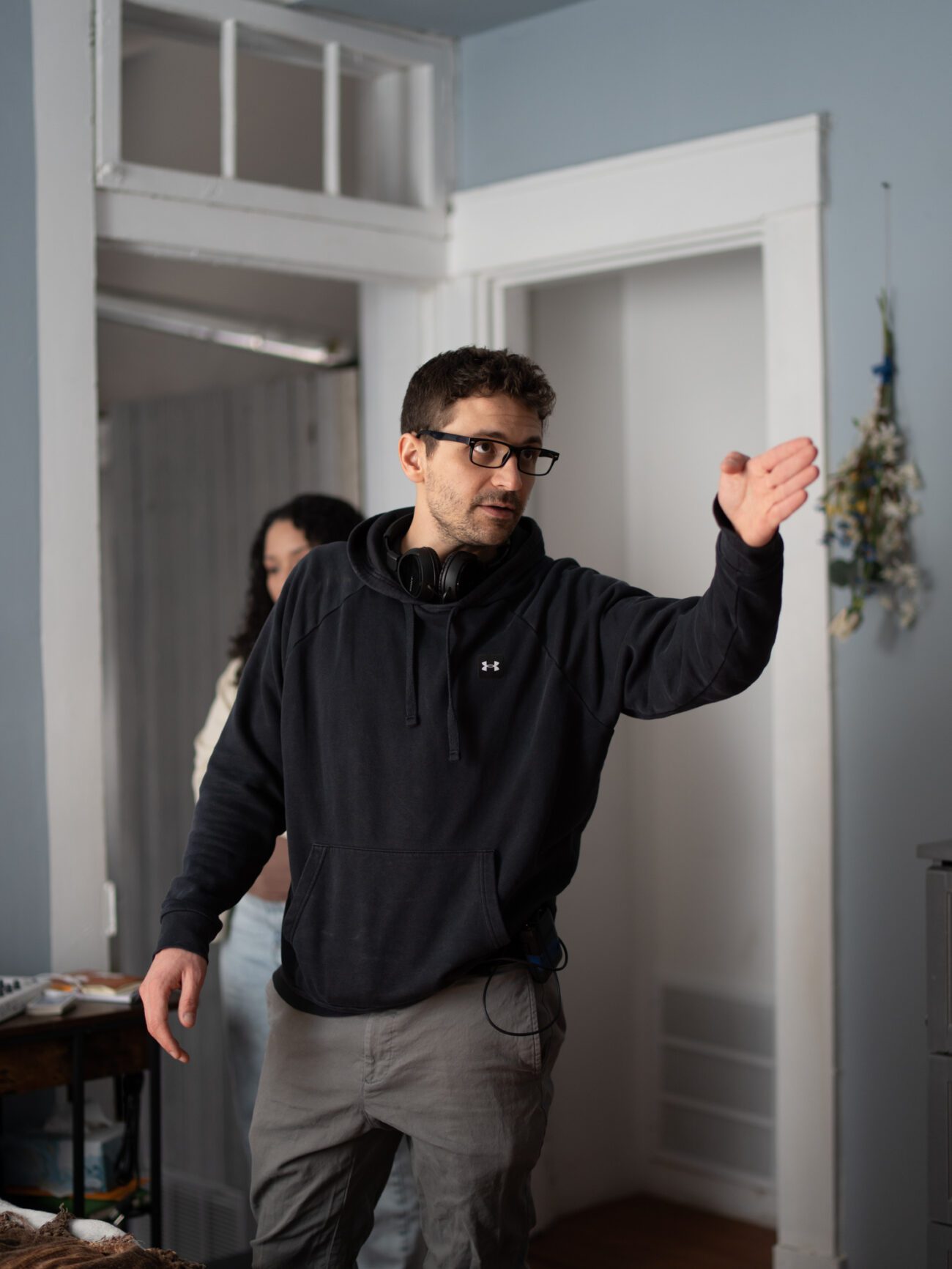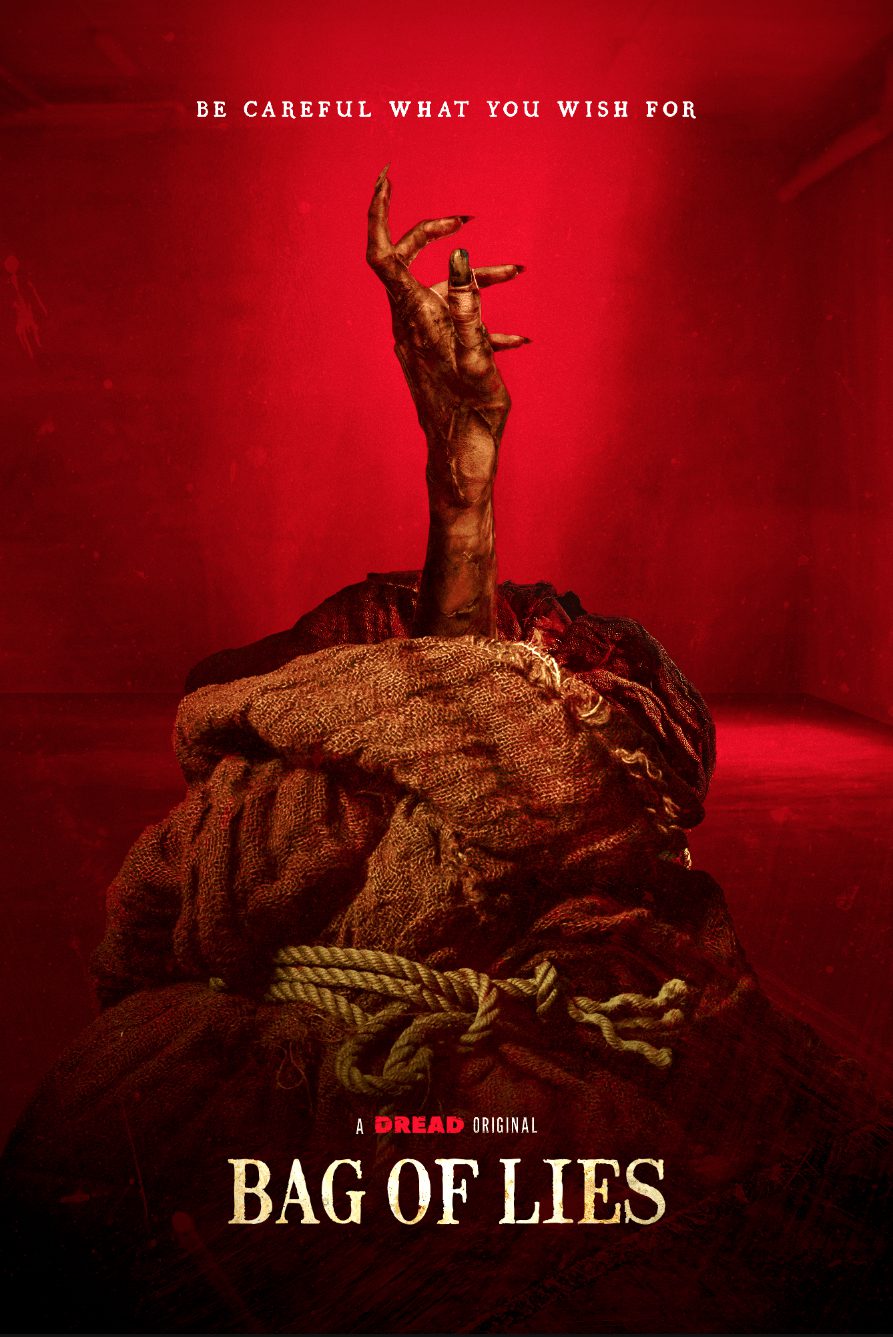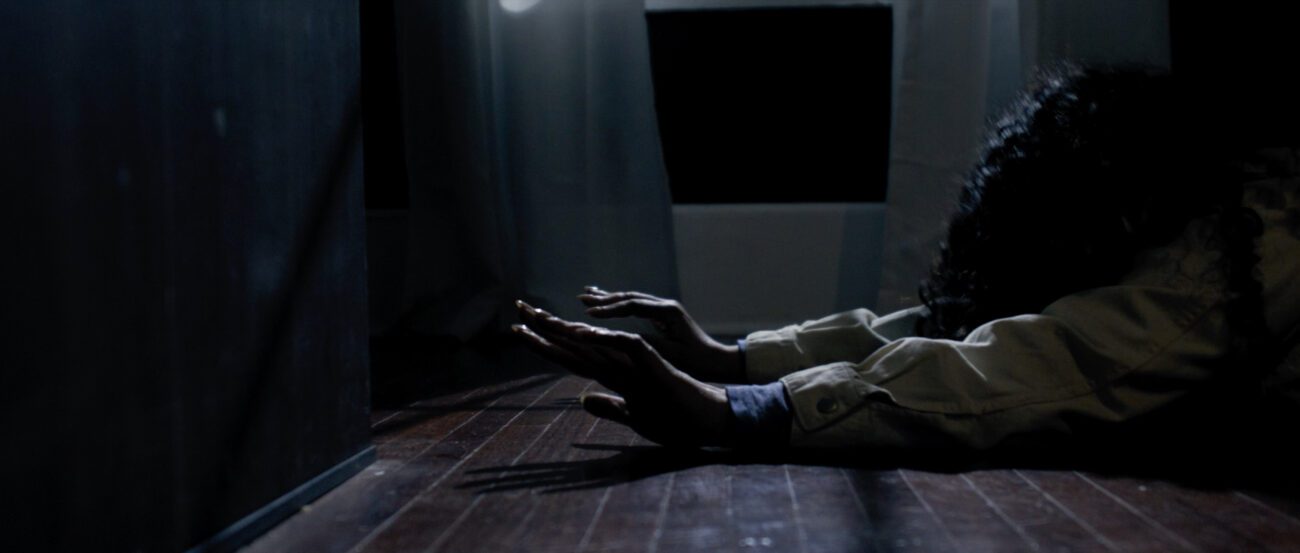David Andrew James’ new feature, Bag of Lies, is a horror tale that examines how far one would go to save their dying spouse. Led by strong performances by Patrick Taft and Brandi Botkin, the film follows Matt (Taft), a desperate man trying to save his cancer-stricken wife (Botkin). He turns to The Bag, an ancient relic with dark magic, for a cure, but the cure demands a chilling ritual and strict rules. As his wife heals, Matt’s sanity unravels, facing terrifying consequences.
Horror Obsessive sat down with David to talk about how he began in the industry and how being a cinematographer for many years helped him become a better director.
Bag of Lies is available on digital now.
You were a cinematographer for many years before directing. Was your goal always to become a director?
Yes, it was always the plan. I had the luxury/misery of directing a lot of short films, corporate, and music videos for many local folks who never saw the light of day, which allowed me to sharpen my teeth leading up to Bag of Lies. I had even directed a no-budget feature six years ago, that only lives on as a ghost in the shell of an old hard drive. I had a lot of experience for someone who has no experience on IMDb. It came in handy on this one; we had 13 days to shoot 72 pages. My team and I never blinked… Unless our eyes hurt, and then we had to blink, for safety reasons.
How do you think your days as a cinematographer helped prepare you to become a director?

Well, above all, it gave me a giant leg up on modulating expectations, as well as sympathizing with crews who work for directors that ask for Marvel-sized shots on Letterkenny-sized budgets. I also work as a grip on feature films here in the Ohio/Kentucky area, and that provides a lot of sure-handedness in terms of communication with a crew. Half the battle is being able to explain what you’re going after; you’d be surprised how many directors fall short in that area. Another benefit is being able to get very precise in describing my shot list to my DoP (in the case of Bag of Lies, it was Brandt Hackney, and I couldn’t recommend him enough.
To all the directors that can get Brandt: HIRE HIM). For example: Instead of saying, ‘I’d like a medium shot from over yonder,’ I can instead say, ‘I need a low-angle, cowboy-sized medium shot, six feet away from the actor, lens height four feet off the ground, with a 27mm.’ I will say, that does shorten the list of DoP’s that will work with you (as some of them like to be more involved on the camera side), however the weaker part of my game is lighting (which is why I’m not known as a DoP). Collaborating with someone like Brandt, who comes from a lighting background, was a dream come true.
Your latest feature, Bag of Lies, was originally developed as a short film by Nick Laughlin. Besides length, how was the short film different from the feature?

It’s hard to say, you know? Joe Zappa and I were actually in the middle of rewriting Nick’s short (which I acted in, and you can laugh at me on YouTube), when the opportunity came along to direct a feature. I reckon the main difference was the psychological deep-dive that went into exploring the emotional vulnerability of the main characters, Matt and Claire.
I watched my father and late stepmother go through a similar scenario before she passed; it was a dynamic that was weighing on my mind for quite some time. Nick’s story connected with me, and it felt like the correct alignment of life and art. I still wonder if it’s cheaper than therapy. Anyway, the original short was creepy, but didn’t have the runtime to tug on the curtain of another layer of horror, which became the logline for the film: How far would you go, to save the one you love? I know it isn’t the most traditional approach to making a horror film, but I hope it connects with people, especially those who have loved and lost.
What stood out to you most about Brandi Botkin and Patrick Taft when you were casting them as the 2 lead characters? Brandi has a lot of heavy scenes, what convinced you she could pull off the role?

Much like our DoP, I cannot recommend Patrick and Brandi enough to other directors out there who need a powerhouse duo of actors. Their backgrounds as theatrical talents really paved the way for us to not only give emotional grounding to the heavier scenes; it allowed me to shoot the scenes the way I intended to. There’s this saying going around about actors, nowadays: They can’t walk and chew gum at the same time (okay, maybe I’m the only one saying it, but I think there’s some truth to it).
The way I like to shoot, you can’t just stand in the middle of the room and deliver your lines. You have to come in, put your keys down, grab a glass of water, and oh yeah, there’s this obstacle that’s taking over my life, and I need to deal with it before I can sit down. Working with Patrick and Brandi, I mean, wow… I got really lucky. We worked extensively in pre-production as a trio. They studied the script thoroughly, they knew their character’s backstories better than I did, and they kept me honest with carving out these little pockets of expression to forge their characters’ reality that much more. This being my first foray into the horror genre, the only way in that felt right, was to perform this as much like a play as I could.
What was your favorite memory from the Bag of Lies shoot?

Okay, this is going to get me in a lot of trouble with Patrick, but I can’t not tell you (and I’m aware of the slight contradiction it has to my last response, but it doesn’t make it any less true). So, there’s this five-page dialogue scene that acts as a ‘false-positive’ for Matt and Claire. It was the second-to-last night of shooting, it’s an overnight, and we had been chipping away at all these tiny scenes leading up to the big beast. Brandi walks in to rehearse with us; Patrick pulls me aside, and says: “Dude, I didn’t know this was next up. I don’t know all my lines yet.” A few people on the crew overheard him, and the chatter of doubt starts seeping in. I knew if I panicked, we were screwed. I pulled him over to Brandi, and told them to go change costumes, then run your lines for fifteen minutes while I blocked the scene without them (I used color-coded tapes and laid out the giant technical dance that the scene required for five pages of dialogue, because, again, no one’s standing in the middle of the room that long).
Brandt and I stuck to our shot list, blocked it all out with me faking as their stand-ins, and then our stars came back. Everyone’s on edge. No one knows how it’s going to go. The camera rolls, the slate is clapped, and Patrick turned on the jets like I’ve never seen before (as did Brandi, per usual). They were absolute dynamite. Watching the film, you’d never know that thirty minutes before we shot it, Patrick wasn’t ready. Movie magic, baby.
What are you most proud of when it comes to Bag of Lies?
Well, here I go again trying to get myself in trouble with the powers that be. What I’m most proud of about making this film, is that we did it with a five-figure production budget. I won’t give the exact amount, but I think if people knew, everyone on the cast and crew would never be out of work ever again. The hustle, the passion, the absolute no-quit attitude that everyone had while they were there… It’s something I’ll never forget for the rest of my life. It was truly an honor working alongside each and every one of them.
David Fincher has been a big source of inspiration for you as a filmmaker. What is it about his work that intrigues you?

Mr. Fincher has raised me my whole life, from afar. I remember in 1999, my grandfather coming to me one day and saying, “There’s this bareknuckle boxing movie coming out. We should go see it.” It was an awkward car ride on the way home from Fight Club. I was way too young to see it when I did, but it scarred me for the betterment of my artistry.
Another element that I derived from him was his passion to learn every element of every single department that works on his sets. His aesthetic is built out of one simple question: “The audience knows you can do anything; so, what don’t you do?” That has resonated with me since I was 19. In fact, growing up here in the Midwest, I couldn’t afford to attend a proper film school like NYU or USC. I studied his all-access BTS discs (for Fight Club, Zodiac, Benjamin Button, Social Network, Dragon Tattoo) until I was blue in the face.
In addition to his technical approach, I’ve also been quite interested in the subject material that he chooses to go after. All are different, yet all within the same strange universe of psychologically scarring. His filmography and ethic forged me a little more than I should admit, but hey, you asked.
If someone were to watch all of your projects one after the other, would they see any commonalities?
First off, I would not recommend doing that. Secondly, if someone did put a gun to your head and forced you to do that, I reckon you’d notice a thread of internal chaos. I’m most interested in the idea of being your own worst enemy. Films that have strong yet flawed characters is the only filter I’d like to run my Netflix account through; I don’t care about genre, I don’t care about who made it. I just want to watch people striving to get out of their own way. Again, seriously, don’t Google anything but Bag of Lies. There’s more to come, I promise.
What advice would you give to new filmmakers that you wish someone had told you?
Oof. I don’t think I’m qualified to answer that question. It’s not that I don’t have anything to offer on the topic; I’ve only made one feature. I feel I should make one or two more films before I have any clout to stand on. However, I won’t leave you high and dry. For all the new filmmakers out there, remember one thing: You never have as much time as you think you do.
Stay vigilant.


